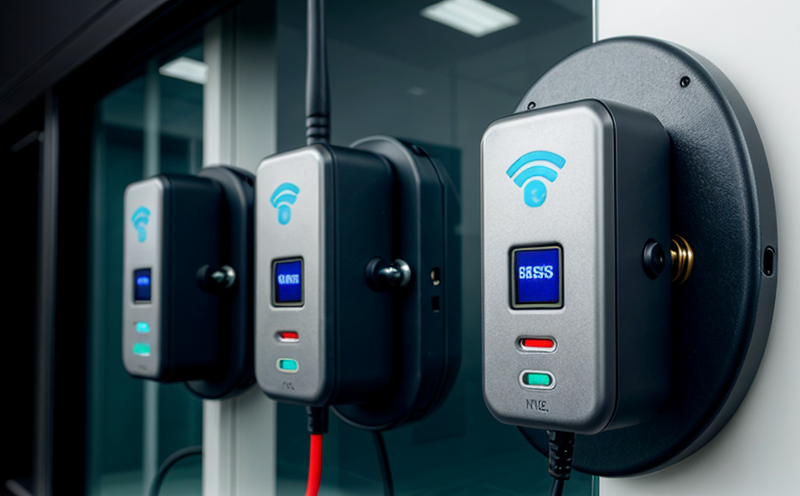IEC 62368 Wireless Audio Video and ICT Device Security Testing
The IEC 62368 standard is a comprehensive set of safety requirements for the design, manufacture, and testing of electrical and electronic products. In recent years, there has been an increasing focus on cybersecurity within this framework, particularly in relation to wireless communication devices like audio video equipment and ICT (Information and Communications Technology) systems.
IEC 62368-4 specifically addresses the security aspects of these devices, ensuring they are secure against unauthorized access or manipulation. This is crucial as more devices connect wirelessly to networks, increasing the risk of vulnerabilities being exploited by malicious actors. The standard covers a wide range of potential threats such as unauthorized access, data interception, and command injection.
Testing under IEC 62368 involves several key components that ensure compliance with security requirements:
- Threat Modeling: Identifying all possible attack vectors on the device to understand potential vulnerabilities.
- Penetration Testing: Simulating cyber-attacks to test how well a system can withstand such attacks without compromising sensitive data or functionality.
- Cryptographic Analysis: Evaluating encryption algorithms and protocols used within the device to ensure they meet current security standards.
- Configuration Management: Ensuring that all configurations of the device are secure by default, with mechanisms in place for secure updates and patch management.
The testing process begins with detailed analysis of the device’s firmware and hardware components. This includes identifying any third-party libraries or software modules that could introduce security risks. Once identified, these elements undergo rigorous scrutiny to ensure they meet IEC 62368-4 criteria.
Testing also involves simulating various types of attacks, including:
- Denial-of-Service (DoS): Testing the device’s resilience against overwhelming network traffic to prevent service availability.
- Brute Force Attacks: Simulating attempts at unauthorized access using automated methods to find passwords or keys.
- Man-in-the-Middle (MitM) Attacks: Ensuring the device can detect and mitigate interception of communications between parties.
The results from these tests are documented comprehensively, providing detailed reports on each aspect of security performance. This information is invaluable for quality managers, compliance officers, R&D engineers, and procurement teams looking to ensure their products comply with international standards while offering robust protection against cyber threats.
Why It Matters
In today’s interconnected world, the security of wireless audio video devices and ICT systems is paramount. As more devices become internet-enabled, they open up new avenues for attack that could compromise personal privacy or corporate data. Compliance with IEC 62368-4 ensures that these products are designed from the ground up to be secure against such threats.
From a business perspective, ensuring compliance not only protects your company’s reputation but also helps avoid costly recalls and legal issues associated with security breaches. For quality managers, this means having clear guidelines on how to implement robust security measures during product development stages. Compliance officers benefit from having a standardized framework that can be easily audited or referenced in regulatory filings.
R&D engineers gain access to cutting-edge testing methodologies that help identify and fix vulnerabilities early in the design cycle. This proactive approach ensures that any necessary modifications are made before products reach market, reducing time-to-market delays associated with fixing critical flaws post-launch.
Competitive Advantage and Market Impact
Adhering to IEC 62368-4 not only ensures product safety but also positions companies as leaders in cybersecurity. In an era where data breaches are increasingly common, consumers expect brands they trust implicitly. By demonstrating commitment to rigorous testing processes that go beyond basic functionality checks, businesses can build stronger brand loyalty and trust.
From a market standpoint, compliance with this standard opens doors to new markets or segments that have stringent security requirements. Governments around the globe are implementing policies mandating certain levels of cybersecurity across industries. Meeting these standards early allows companies to anticipate regulatory changes and position themselves favorably ahead of competitors who may lag behind.
The competitive landscape is shifting rapidly, with consumers becoming more aware and demanding when it comes to privacy concerns. Companies that prioritize security early in their product lifecycle will not only meet existing regulations but also stay ahead as new ones are introduced. This proactive stance can differentiate them from competitors offering similar products at lower prices or without equivalent attention paid towards cybersecurity.
Use Cases and Application Examples
| Use Case | Description | Data Points |
|---|---|---|
| Home Security Systems Integration | Testing the compatibility and security of wireless audio/video devices when integrated into home security systems. | - Ensuring seamless interoperability with other smart home devices - Verifying secure authentication methods for user access - Detecting potential vulnerabilities in communication protocols used between components |
| Enterprise IT Infrastructure Protection | Evaluating the security of wireless ICT devices within corporate networks to protect sensitive information. | - Assessing encryption strength and key exchange mechanisms - Checking for susceptibility to remote code execution (RCE) attacks - Confirming proper implementation of firewalls and intrusion detection systems integration |
| Smart Healthcare Devices | Ensuring the privacy and integrity of medical data transmitted wirelessly between devices. | - Evaluating end-to-end encryption for patient records - Analyzing risk factors related to unauthorized access during transmission - Testing robustness against Denial-of-Service (DoS) attacks on critical life support systems |





